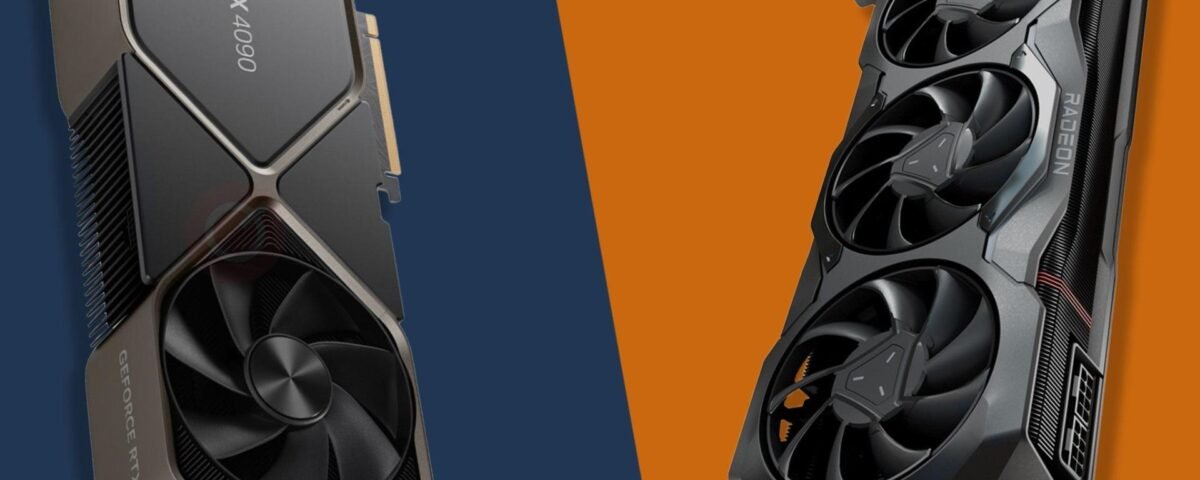
Deep Learning Hardware Rentals: Desktops, Laptops & Servers on Rent
September 8, 2025
Premium MacBook Rentals for Creative Agencies, Designers & Video Editors
September 20, 2025Introduction: The Role of GPUs in Deep Learning
Artificial Intelligence (AI) and Deep Learning have revolutionized industries ranging from healthcare and finance to autonomous vehicles and robotics. At the core of this revolution lies powerful hardware, particularly Graphics Processing Units (GPUs), which handle the massive computations required to train complex AI models.
Two major players dominate the GPU market: NVIDIA RTX and AMD Radeon. Choosing the right GPU is crucial for researchers, startups, and enterprises working on AI, Machine Learning (ML), and Deep Learning projects.
In this blog, we’ll compare NVIDIA RTX and AMD Radeon GPUs, explore their strengths, and help you understand which hardware is better suited for AI workloads in 2025 and beyond.
Why GPUs Matter for Deep Learning
Deep learning involves processing massive datasets and running neural network algorithms that require parallel computations. While CPUs handle sequential tasks well, GPUs excel in executing thousands of parallel operations simultaneously.
Here’s why GPUs are critical for AI:
- High-speed data processing for training deep neural networks.
- Real-time AI inference in applications like self-driving cars and robotics.
- Support for frameworks like TensorFlow, PyTorch, and Keras.
- Acceleration of tasks like computer vision, NLP, and predictive analytics.
Choosing the right GPU can reduce training time, lower operational costs, and improve overall AI performance.
Overview of NVIDIA RTX GPUs for AI
NVIDIA has been the industry leader in AI-focused GPU development for years. The NVIDIA RTX series, powered by advanced architectures like Ampere, Ada Lovelace, and Hopper, is built to handle AI and machine learning workloads efficiently.
Key Features of NVIDIA RTX GPUs
- CUDA Cores – NVIDIA’s proprietary CUDA architecture enables seamless AI and ML development.
- Tensor Cores – Specialized cores designed specifically for deep learning calculations, boosting training speed.
- Wide Software Support – Optimized drivers for AI frameworks like PyTorch, TensorFlow, and RAPIDS.
- High VRAM Capacity – Essential for handling large datasets and deep neural networks.
- Real-Time Ray Tracing – While popular in gaming, it’s also used in simulation and AI rendering projects.
Popular NVIDIA RTX Models for AI (2025)
- NVIDIA RTX 4090 – Flagship consumer GPU with outstanding performance for both AI research and gaming.
- NVIDIA RTX A6000 – Designed for enterprise-level AI and data science workloads.
- NVIDIA RTX 4080 SUPER – Balanced performance for mid-to-high range AI projects.
- NVIDIA RTX 5000 Ada Generation – Targeted for professional AI developers.
Overview of AMD Radeon GPUs for AI
While NVIDIA dominates the AI GPU market, AMD Radeon has gained attention in recent years by improving its hardware capabilities and software support. AMD GPUs are built on the RDNA and CDNA architectures, focusing on high performance with competitive pricing.
Key Features of AMD Radeon GPUs
- Open-Source Ecosystem – AMD’s ROCm platform is completely open-source, giving developers flexibility and control.
- High Performance-per-Dollar – Radeon GPUs often offer better pricing compared to NVIDIA, making them attractive for budget-conscious users.
- Strong Hardware for Graphics Workloads – Excellent for gaming, 3D rendering, and creative industries, with growing AI adoption.
- Scalability with Infinity Fabric – Enables multi-GPU setups for large-scale computations.
Popular AMD GPUs for AI (2025)
- AMD Radeon RX 7900 XTX – High-end GPU suitable for mixed workloads.
- AMD MI300 Series – Built specifically for AI and data center environments.
- AMD Radeon PRO W7900 – Professional-grade GPU for AI research and rendering.
NVIDIA RTX vs. AMD Radeon: Deep Learning Comparison
| Feature | NVIDIA RTX | AMD Radeon |
|---|---|---|
| AI Framework Support | Widely supported (TensorFlow, PyTorch, RAPIDS) | Limited but growing (ROCm, PyTorch support improving) |
| Tensor Core Availability | Yes – Dedicated tensor cores for deep learning | No tensor cores, relies on general GPU processing |
| Ecosystem | Mature ecosystem with extensive libraries | Open-source but still developing |
| Performance-per-Dollar | Higher upfront cost but optimized performance | Generally more affordable, competitive pricing |
| Best Use Case | AI research, ML model training, enterprise-level AI projects | Creative workloads, budget AI projects, and general-purpose computing |
Software Ecosystem & Developer Experience
NVIDIA Advantage
NVIDIA’s biggest strength lies in its CUDA ecosystem. CUDA provides:
- Pre-built libraries optimized for AI and ML.
- Extensive documentation and developer community support.
- Compatibility with almost every major deep learning framework.
This makes NVIDIA GPUs the default choice for AI researchers and data scientists.
AMD Advantage
AMD’s open-source ROCm (Radeon Open Compute) platform has made significant strides in recent years:
- Provides a flexible and transparent environment for AI developers.
- Compatible with popular AI libraries like PyTorch.
- Attracts developers who prefer open-source solutions.
While ROCm is promising, it still lags behind NVIDIA’s CUDA in terms of maturity and widespread adoption.
Cost Considerations: NVIDIA vs. AMD
Cost plays a major role when selecting GPUs for deep learning projects.
- NVIDIA RTX GPUs generally come at a higher price point, especially for enterprise-grade models like the RTX A6000.
- AMD Radeon GPUs offer competitive pricing, making them attractive for startups and educational institutions.
However, when factoring in software optimization, time savings, and ecosystem benefits, NVIDIA often delivers better long-term value, especially for large-scale AI deployments.
Future Trends in AI Hardware (2025 and Beyond)
As AI continues to advance, both NVIDIA and AMD are innovating to meet future demands:
- NVIDIA is focusing on specialized AI processors, including GPUs with enhanced tensor core performance and dedicated AI inference chips.
- AMD is expanding its data center-focused MI300 series, targeting AI cloud computing and large-scale training models.
- The rise of quantum computing and AI accelerators will further reshape the AI hardware landscape.
By 2027, the AI hardware market is projected to exceed $200 billion, with GPUs remaining at the heart of deep learning infrastructure.
Choosing the Right GPU for Your AI Needs
When deciding between NVIDIA and AMD for AI projects, consider:
- Project Scope – For enterprise-level AI research, NVIDIA RTX is the safer choice.
- Budget – AMD Radeon GPUs are ideal for smaller teams and experimental projects.
- Software Requirements – If you depend heavily on TensorFlow or CUDA-optimized libraries, NVIDIA remains unmatched.
- Scalability – For multi-GPU clusters and data centers, NVIDIA has more established solutions.
Conclusion: NVIDIA RTX Leads, AMD Radeon Shows Promise
Both NVIDIA RTX and AMD Radeon play significant roles in the AI hardware ecosystem.
- NVIDIA RTX currently leads due to its mature ecosystem, dedicated AI features, and wide framework support.
- AMD Radeon, however, offers competitive pricing and an open-source approach, making it appealing for developers who value flexibility and cost-effectiveness.
As AI hardware continues to evolve, AMD is closing the gap, promising a more competitive landscape in the coming years. Whether you prioritize performance, budget, or ecosystem compatibility, understanding these differences will help you choose the right GPU for your deep learning journey.






















